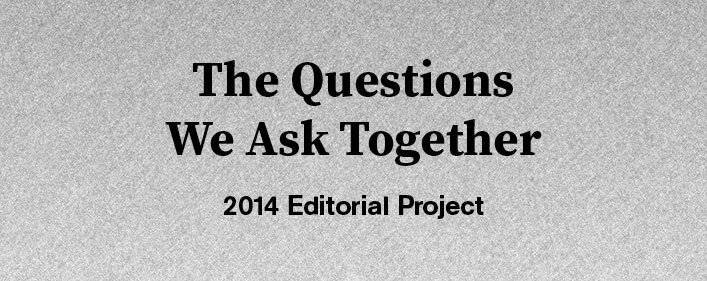What is the role of ego in this work? When is it useful?
Megan Johnston: As a curator, I always start with the artist and the art. So my question is what is the intention of the artist? The curator? The institution? Moreover, the notion of the ego brings to mind other key ideas that unpack such as collaboration, community and the role of the curator today.
Michael G. Birchall: Artistic ego’s play a major role in any kind of art production in and outside of the visual arts. Yet the ego of the artist in socially engaged art is often divided into two distinct categories; those who engage actively with audiences of a set period of time, and those who form temporary alliances in order to produce work, which is easily exhibited in the contemporary art circuit. Curators are always being accused of managing their egos when they are involved in the production of art (Harald Szeemann comes to mind here). It was Daniel Buren who first commented on the rise of the curator in the 1970s and how there is no longer a place for artists in this discourse. The complex relationship between audience, community and artists are all questionable in socially engaged art. I am certain we are moving towards long-term sustainable projects in which ego becomes less important, as artists and cultural producers become engaged in works that enable a socially-sustainable work. Are artists are increasingly providing services? Where the state fails, the artist fills in the gaps…
MJ: Agreed. I’m thinking in terms of intentionality versus ego (I’m not a fan of Freud). In relation to artists who employ socially engaged methods and approaches, there may be an ego or there may not be. In that regard, the ego is not a set notion but rather a more like a rhizome. With creative-types who utilize social practice processes, I find that they fall onto a spectrum of sorts. It is a spectrum along which sits variable practices and foci in relation to those mentioned above as well as authorship, audience, community and the role of the curator.
MB: In that regard, how are artists and curators being utilised by institutions? As cultural workers, are we responsible for this transition – as well as the expanse of socially engaged art – as we respond to post-Fordist working conditions?
MJ: As noted in an earlier OE blog post by W. Keith Brown, there are some questions to pose around the idea of the ‘White Savior Industrial Complex’. Why do we do social practice? With whom? Is our process to ‘drop in’ and work with community; or is it a ‘slower’ process? (I’m very into the Slow Movement and what I have coined as Slow Curating as a process for deep and meaningful connections.) In my experience, however, I find it is the institution that is most resistance to questioning their own ego or authority. Yet is more than just institutional critique––it’s post-institutional critique because all of the canons and those that uphold them are in crisis. Why are institutions interested in this practice? As practitioners, we need to be very clear about our artistic intentionality.
About the contributors:
Michael G. Birchall is a curator, writer and PhD candidate in Art, Critique & Social Practice at the University of Wolverhampton where he is researching the role of the curator as a producer in socially engaged practices. He has held curatorial appointments at The Western Front, Vancouver, Canada, The Banff Centre, Banff, Canada, and Künstlerhaus Stuttgart, Germany. His writing has appeared in Frieze, Frieze d/e, thisistomorrow, C-Magazine, and various monographs and catalogues.
Michael’s recent curatorial projects include Wie geht’s dir Stuttgart?/How are you doing Stuttgart? at Künstlerhaus Stuttgart. Since 2012 he has been lecturing on the Curating Program at the Zurich University of the Arts (ZHdK), and is co-publisher of the journal On Curating. In 2015 he will curate an exhibition on socially engaged art, at the Exhibition Research Centre (ERC), at Liverpool John Moores University’s School of Art and Design. He lives and works in Berlin. https://wlv.academia.edu/MichaelBirchall
Megan Johnston is a curator and educator and is currently Director at The Model: Home of the Niland Collection in Sligo, Ireland. She has curated more than 300 artists’ projects in museums and galleries in Ireland and the United States—focusing on socially engaged curatorial practice. Johnston received her BA in Art History from the University of Minnesota on Art of the Paris Commune with Gabriel Weisberg and Modernism and Feminism with Griselda Pollock. Johnston’s MA in Visual Culture investigated the Orange Order subculture in Northern Ireland and is a benchmark in conflict resolution techniques. She currently finalizing a PhD socially engaged curatorial practice and new approaches to contemporary museology. themodel.ie, meganjohnston.virb.com
